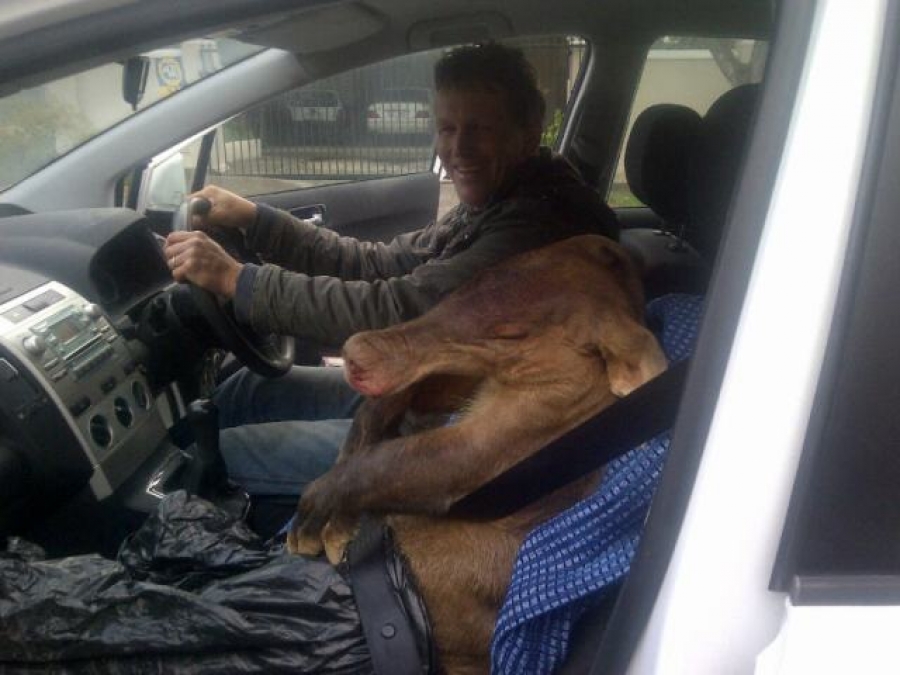Tags
THE CALL
It was during the spring of 2013 when I received an early morning call from my dentist. Since it was a Saturday, I realised that this was not the usual courtesy call reminding me of my annual check-up. It should be mentioned that my dentist is also not your usual specimen of dentists. Rough around the edges is an understatement to say the least.
I remember a time when I built small mole skeletons by sticking the bones on a piece of paper using super glue. Amazingly the hobby developed to a point where, some years later we had a fully grown giraffe skeleton standing in our front garden.

*Image, courtesy of Pieter le Roux of "Saving the Survivors".
After surviving a poaching attack in 2015 a white rhino from the Eastern Cape in South Africa was viewed by many as the icon for anti-poaching groups. The 6-year old calf, dubbed “Hope” after surviving the attack, sadly died of intestinal infection on 15 November 2016.
SACRED NUMBER 8-01488
The young Sacred Ibis (Threskiornis aethiopicus) was almost 15 days old when he started to venture outside the nest. He was born on the 12th of June 2004. His two brothers and sister preferred the safety of the nest and the closeness of their parents. He always thought himself to be different from his siblings. He wanted to know more. Experience the vastness of the world that begged. He somehow sensed that the experience called life was not destined for everyone. He was fortunate. He won the chance in a million to experience this wondrous adventure called living. He saw the elders flapping their wings a few times before quietly taking off. Majestic and free. They made no noise as they soared high above in groups of four to ten before drifting down to land in the colony. The flight was dead silent and very different from their close relative the Hadeda ibis (Bostrychia hagedash), who made a terrible noise while attempting flight with a more rapid movement of the wings. The young Sacred Ibis did not like this distant cousin and had feelings similar to that of having a brother in prison. Too noisy, ugly and generally too grotesque too be compared to the majestic nature and looks of his family. Then there was the question of diet – Hadeda’s preferred worms and land insects. “Jeauchhh”, he thought. How can that possibly be compared to the culinary superiority of the delicious frog, fish, mollusc or crab? OK, he saw his parents sometimes nibble on the odd grasshopper and water worm, but that would only be in dire circumstances. His dad always said you do not have to like everyone, as long as you are at peace with the fact that everyone does not like you. Fortunately his colony’s breeding spot was in the trees surrounding a marshy swamp area in the Western Cape region and while swamps are the preferred habitat for Sacred ibises, Hadedas mostly stay away from water. The long and short was that he did not like the Hadeda. Simple as that.

As the days went by he started growing flight feathers. Wonderful! His licence to freedom.
Road kill skeletons is proud to introduce our new website blog page and we invite all to participate in commentary on articles posted here. The articles will focus on topics related to skeletons, but will also include a human element that will elaborate on skeleton tales and experiences. At RKS we are not claiming to know everything about skeletons or anatomy; in fact, we regard the act of learning as a dynamic process and critical evaluation as a necessary ingredient for expanding knowledge and promoting rational thinking. We therefore invite followers to feel free to criticise, advise or correct any content published on this blog.





